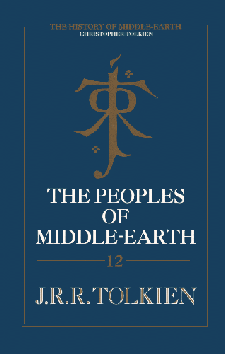 |
| Middle Earth in the Fourth Age from www.tolkienforums.com |
Considering the publication history of the Lord of the Rings trilogy the only thing the good professor would (nearly) finish afterwards (in the major book sense) is the epic Silmarillion (published in 1977 four years after his death). I say nearly as his son Christopher had to edit it a lot to make it into a story.
Before the Silmarillion however he contemplated a story about the transience of good and the flawed nature of Man, he called this idea The New Shadow. Again, to me the idea has some merit which he apparently wrote in the 1950's and again near the end of his life in 1968. In this we have the Professor's own words on the matter:
I did begin a story placed about 100 years after the Downfall, but it proved both sinister and depressing. Since we are dealing with Men it is inevitable that we should be concerned with the most regrettable feature of their nature: their quick satiety with good. So that the people of Gondor in times of peace, justice and prosperity, would become discontented and restless — while the dynasts descended from Aragorn would become just kings and governors — like Denethor or worse. I found that even so early there was an outcrop of revolutionary plots, about a centre of secret Satanistic religion; while Gondorian boys were playing at being Orcs and going around doing damage. I could have written a 'thriller' about the plot and its discovery and overthrow — but it would have been just that. Not worth doing.
- J.R.R Tolkien
I bring this up because with the proper fleshing out this could actually be a very good campaign world, consider:
- The New Shadow storyline eliminates the "War of the Ring Problem" as I call it. It's the issue of THE event hovering over the world. Dragonlance also suffers from this problem. The New Shadow means a familiar world, but not encumbered by the War of the Ring per say.
- A world likewise far enough into the future means that none of the "personages" of the Third Age and specifically the War of the Ring are going to be around with the possible exception of Gimili and Legolas. This a new, wide open tableau to work with.
- Along with very few if any of the main characters There is going to be very few elves left, and the dwarves retreating further into the mountains. That leaves humans and hobbits. For evil a reappearance of orcs and undead (like skeletons and barrow wights) works for evil.
- Middle Earth isn't all that of a clerical world, at least in the D&D sense. Because of this it makes undead that much more of a fearsome foe.
- The New Shadow Cult could be greatly expanded upon and taken in any number of directions.
- The High King of the Reunited Kingdom is Aragorn's (Ellesar) son Eldarion, Going with some of the points above it allows for a great latitude as the Tolkien didn't write too much about the Fourth Age. Plus due to his elven parentage through Aragorn its possible to place Eldarion's reign even further into the future. A small but added bonus is he's not "really" in the movies other then the dream sequence of Arwen.
 In short I think a Middle Earth a few centuries after the Downfall could be a very viable campaign setting for your favorite RPG, it doesn't necessarily have to be AD&D, I simply used it as a guide. ICE MERP could work as I think 1st or 2nd edition Warhammer role-play rules would work very well. Clearly overall it needs to be made much more grim for most people's taste but there are some good hooks there to build upon.
In short I think a Middle Earth a few centuries after the Downfall could be a very viable campaign setting for your favorite RPG, it doesn't necessarily have to be AD&D, I simply used it as a guide. ICE MERP could work as I think 1st or 2nd edition Warhammer role-play rules would work very well. Clearly overall it needs to be made much more grim for most people's taste but there are some good hooks there to build upon. For more info on the New Shadow story begun, but not finished by the Professor click here.
For more info on the New Shadow story itself look here. The actual text appears in The History of Middle-earth, specifically the The Peoples of Middle-earth I have only ready excerpts and it is on my list to read this year (at least sections).

I have always toyed with these ideas .That when the Ring-Wraiths fall at the end of the Third age, their rings are buried in the rubble of Barad Dur and are not destroyed. This leaves open the way for the diminished but not utterly destroyed Nazgul to exert influence on others to try and retrieve the rings to free themselves....or regain power as their want may be. Since Sauron imbued and invested some of his own power into creating the rings, this leaves the possibility of some of his own dark influence subtly steering plots and events also. The rest you have written above, are similar to the other ideas I have had :)
ReplyDelete